 spieth12@spiethstorage.com
spieth12@spiethstorage.com +86 18006010205
+86 18006010205
-
Time:9/16/2025
-
Time:9/15/2025
-
Time:9/10/2025
-
Time:9/5/2025
-
Time:9/2/2025
-
 Tel : +86 18006010205
Tel : +86 18006010205
-
 E-mail : spieth12@spiethstorage.com
E-mail : spieth12@spiethstorage.com
-
 Address : Tongan Park, Tongan District, Xiamen, China 361023
Address : Tongan Park, Tongan District, Xiamen, China 361023
What is Mezzanine Flooring? Construction, Requirements and Applications
 Time:1/11/2023
Time:1/11/2023 2666
2666Mezzanine Floor Definition
A mezzanine floor is a mid-level built between the floors and ceilings of two main floors or buildings. It extends over a specific area, rather than extending across the entire floor space.The mezzanine should allow sufficient clear height for pedestrian traffic above and below the deck. In industrial environments, mezzanine systems are typically used to store inventory or other materials. Yet, mezzanine floor systems have been used in a wide variety of environments, including commercial office spaces, warehouses, manufacturing facilities, auto dealerships, and even breweries.
Mezzanine floors can be designed to many different specifications, including different load ratings, layouts, decks, railing types, etc.
What is Mezzanine Flooring made of?
Mezzanine floors are typically manufactured from a combination of steel, concrete, wood, stainless steel or even fiberglass. The construction of a mezzanine floor can be determined by the type of mezzanine and its purpose. Steel and concrete are the most common types of mezzanine construction. Some applications may require corrosion resistant materials such as stainless steel.
The majority of industrial mezzanines consist of modular, prefabricated steel systems designed to be quickly and easily installed at the factory. Steel mezzanines have the capability to be designed to provide support for heavy loads.
Mezzanine floors are commonly made of steel, wood, composite materials or concrete. Steel grating is used to provide slip resistance and drainage for the food manufacturing and waste management industries. Composite resin decking systems are low-weight and long-lasting for storage mezzanines. Concrete decking is considered the most sustainable for heavier industrial applications.
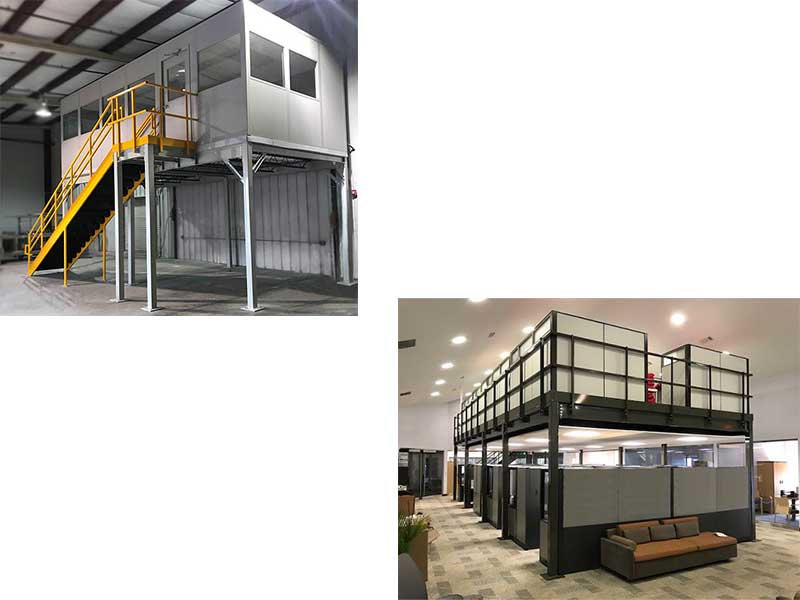
Essential Tips for Building a Mezzanine
Building a mezzanine involves more than just adding an extra level to your space; it demands careful planning and expertise. Here are some key tips to ensure you create a mezzanine that is both functional and compliant with necessary standards.Collaborate with Experts
Begin by consulting with specialized mezzanine designers or manufacturing firms. Their expertise will guide the design and ensure the system complies with safety codes and is built to last.Assess Specific Requirements
Clearly understand the intended use of your mezzanine. Consider aspects such as the weight of items it will support and environmental factors like exposure to water or chemicals which could affect materials used.Plan the Layout Effectively
When designing your mezzanine, remember to include space for stairs. This is crucial for optimizing the flow and functionality of the area.
Budget and Insurance Considerations
Before diving into material selection, establish a clear budget and understand any insurance requirements. Knowing these constraints upfront can help in choosing appropriate decking surfaces and materials without unexpected financial strain.By following these steps, you can construct a mezzanine that's both practical and aligned with your space's requirements.
Understanding Storage Mezzanine Floors vs. Equipment Platforms
A storage mezzanine floor is essentially an intermediate floor within a building, primarily designed to maximize storage space. These mezzanines are versatile and can accommodate a wide variety of items such as inventory, supplies, hardware, documents, machinery, or even office furniture.
By utilizing vertical space, businesses can significantly increase their storage capacity without expanding the physical footprint of the building.
Key Differences: Storage Mezzanine vs. Equipment Platform
Purpose and Usage:
Storage Mezzanine: Specifically intended for storing goods and materials, these floors are accessible to personnel who may need to manage or retrieve stored items.
Equipment Platform: These are often used to support mechanical systems or heavy equipment and are typically off-limits to general personnel, with access restricted to maintenance staff.
Accessibility Standards:
Storage Mezzanine: Compliance with safety codes is crucial. According to the International Building Code (IBC) Section 505 and Chapter 10, storage mezzanines must include IBC-compliant stairways to ensure safe and efficient access.
Equipment Platform: Platforms need to adhere to standards set by the Occupational Safety and Health Administration (OSHA), which include specifications for stairs and guardrails but are more focused on safety for maintenance and operational needs.
With these distinctions, businesses can choose between a storage mezzanine or an equipment platform based on their specific operational requirements and compliance obligations.
Understanding Mezzanine Stair Requirements
When it comes to adding mezzanines to your building, understanding the requirements for mezzanine stairs is crucial. These stairs aren't just any ordinary set—they are integral to the building's means of egress.Compliance with Building Codes
International Building Code (IBC) Standards
Mezzanine stairs must comply with the International Building Code (IBC) requirements, particularly those outlined in Chapter 10, which details the aspects of means of egress.
Considered a Story
Mezzanines are treated as a separate story within a building structure, necessitating a proper egress route. This is where mezzanine stairs come into play, ensuring safety and accessibility.
Key Features of Egress Stairs
Width and Capacity: Egress stairs must accommodate the expected number of occupants.
Riser and Tread Dimensions: The IBC specifies minimum and maximum sizes to ensure safe ascent and descent.
Handrails and Guards: Required to enhance safety, these features must meet specific height and strength criteria.
By adhering to these codes, building owners ensure the safety and functionality of their mezzanine spaces. Always consult with a qualified architect or engineer to ensure compliance when designing or renovating your building's mezzanine stairs.
How Does an Office Mezzanine Floor Contribute to Workspace Efficiency?
Office mezzanine floors are a strategic solution for maximizing workspace efficiency without the hassle of building extensions. Here's how they make a difference:
1. Maximizing Vertical Space: By utilizing vertical space within an existing building, mezzanines effectively double the usable area. This approach alleviates cramped conditions, allowing for more organized, productive work environments without the costly investment of new construction.
2. Enhancing Proximity and Communication: In settings such as manufacturing or production facilities, mezzanine floors allow office personnel like engineers or operations managers to remain close to the action. This proximity fosters better communication and quick decision-making, crucial for maintaining workflow efficiency.
3. Flexibility and Customization: Mezzanine floors offer flexible design options, allowing businesses to create spaces that meet specific needs—be it additional storage, office spaces, or meeting rooms. Such adaptability means that workspace can be tailored to enhance productivity.
4. Cost-Effective Expansion: Adding a mezzanine is often more cost-effective than traditional expansion methods. Businesses can achieve the desired increase in space without incurring the extensive costs associated with new construction, thus allocating resources to other vital areas.
5. Streamlining Workflow: By consolidating workspaces to be more accessible, mezzanines can streamline operations. Employees can perform their duties more efficiently when essential areas and resources are conveniently located nearby.
In summary, office mezzanine floors are a practical solution to optimize workspace efficiency, offering increased space, improved communication, and significant cost savings while maintaining operational fluidity.
How Does a Rack Mezzanine Function?
A rack mezzanine operates as an ingenious solution for optimizing storage space within warehouses. It leverages the existing storage rack setup as the foundational support for an additional mezzanine level. This multi-purpose design enables the structure to simultaneously support heavy loads on both the shelf and mezzanine levels, providing a robust framework for storing goods.
Structural Integration: The rack system serves as the primary skeleton, upon which the mezzanine is built. It's an innovative use of vertical space that maximizes utility without the need to alter the warehouse layout extensively.
Multi-floor Configurations: Many setups incorporate multiple tiers, allowing for increased access and organizational capabilities. This multi-level approach enhances workflow efficiency by streamlining the inventory management process.
Benefits of a Rack Mezzanine
Implementing a rack mezzanine in your storage area brings several notable advantages:
Cost-Effective: By using the same structure for both the shelving and mezzanine, you cut down on material and installation expenses. There's no need for separate structures, which can increase costs.
Space Maximization: With the ability to create additional floors, you utilize vertical space efficiently without expanding the warehouse footprint. This is especially beneficial in urban areas where space comes at a premium.
Enhanced Accessibility: By introducing multiple levels, retrieving items becomes more straightforward. Employees can quickly access inventory at different heights, which can boost productivity and reduce downtime.
In summary, a rack mezzanine transforms how businesses approach warehousing by providing a flexible, scalable, and cost-efficient solution for space management. It empowers companies to better organize their inventory while maintaining easy access and optimized operations.
Understanding the Use of a Work Platform Mezzanine
A work platform mezzanine serves multiple purposes in an industrial or warehouse setting. Its primary function is to create an elevated workspace, allowing employees to efficiently perform tasks such as packaging, assembly, maintenance, and quality control.
These structures are strategically positioned near machinery, conveyor systems, and essential maintenance zones to enhance access for operators and maintenance personnel. By doing so, work platform mezzanines can significantly optimize workflow and improve productivity.
Whether it’s increasing operational efficiency or creating more floor space, these mezzanines play a crucial role in boosting the efficiency of industrial processes.
When are Alternating Tread Stairs Appropriate for Mezzanine Access?
Alternating tread stairs offer a unique solution for mezzanine access, especially when space is limited. Here’s when and how they can be appropriately used:
Small Mezzanines: These stairs are suitable for mezzanines under 250 square feet. If the mezzanine serves five or fewer occupants, this option meets the International Building Code (IBC) guidelines as a primary means of access.
Space-Constrained Areas: For larger mezzanines where space is restricted, alternating tread stairs can be employed as a secondary means of egress. This allows for efficient use of available space without compromising safety.
Key Considerations:
The size of the mezzanine and the number of users critically determine the appropriateness of alternating tread stairs.Always consult local building codes and regulations to ensure compliance.
In summary, alternating tread stairs are ideal when dealing with small, minimal-occupancy mezzanines or when additional egress routes are necessary in space-limited areas.
Understanding Portable Mezzanines
A portable mezzanine is a versatile, elevated platform designed for easy relocation. Unlike traditional mezzanines, these structures are not fixed and can be moved as needed, offering flexibility in various environments.
Key Features
Mobility: Engineered for transport, portable mezzanines are typically lighter and simpler to dismantle and reassemble.
Size and Design: These mezzanines are often smaller, built to serve as storage solutions or workspace expansions in constrained areas.
Typical Uses
Temporary Storage: Ideal for creating additional storage space in warehouses that need to adjust frequently to changing inventory demands.
Trade Shows and Events: Businesses often use portable mezzanines to create tiered displays or VIP viewing areas at events and exhibitions.
Retail Settings: In retail, they can provide additional display space or serve as seasonal storage for excess inventory.
Industrial Applications: Factories use them to extend workspace or store tools and materials, streamlining operations without modifying the main structure.
Offices: When space is at a premium, portable mezzanines can add much-needed office areas or meeting rooms without costly renovations.
These structures are a practical solution for businesses seeking immediate, yet temporary, space efficiency. Their reusability and ease of assembly make them an attractive choice for dynamic environments needing flexible spatial solutions.
How Does a Mezzanine Differ from a Balcony?
When considering architectural features, it's essential to understand the distinct purposes and structural characteristics of mezzanines and balconies.
Mezzanines
- A mezzanine is a partial floor located between two main floors of a building.
- Its primary function is to maximize vertical space within a building, providing additional usable area without expanding the building's footprint.
- Often used in commercial spaces, it can support different activities, such as extra office space or storage, and is integrated seamlessly within the interior.
Balconies
It serves primarily as an outdoor extension of the indoor living area, providing space to enjoy views and fresh air outside the confines of a building's structure.
Balconies are typically supported by brackets or columns, depending on their size and placement.
In summary, while a mezzanine is an indoor feature dedicated to optimizing internal space, a balcony enhances the connection between indoor and outdoor environments.
Understanding the Difference: Mezzanines vs. Equipment Platforms
When it comes to construction and code compliance, distinguishing between a mezzanine and an equipment platform is crucial. Although they may appear similar, they serve distinct purposes and meet different regulatory criteria.
Mezzanines
Purpose and Access: Mezzanines are commonly used for additional storage or workspace. They are accessible and integrated into the usable floor area of a building, often allowing for human occupancy.
Equipment Platforms
Purpose and Access: Equipment platforms, on the other hand, are primarily designed to support machinery or equipment. They are typically not intended for regular human access, focusing on servicing or operating complex systems.
Key Differences
Usage: Mezzanines expand usable space, whereas equipment platforms support machinery.
Understanding these distinctions is crucial for ensuring compliance with construction standards and optimizing the safe use of both structures.
Understanding the Distinction: Loft vs. Mezzanine
When exploring architectural spaces, it's common to encounter the terms "loft" and "mezzanine." Though they might seem similar, they serve different purposes and are distinct in their design and function within a building.
Loft: The Under-Roof Haven
A loft is a versatile space directly beneath the roof of a building. Characterized by its high ceilings and openness, it provides an area that can be adapted for various uses, including living quarters, storage, or even artistic studios. Lofts are usually integrated into the structure, open to the floor below, and emphasize spaciousness and airflow.
Design Attributes: Typically features open layouts, large windows, and exposed structures.
Common in: Older industrial buildings repurposed into residential or workspaces.
Mezzanine: The Intermediate Level
In contrast, a mezzanine is a partial floor that exists between two main floors of a building. It functions as an intermediate level, often introduced to maximize vertical space without a full additional floor.
Design Attributes: Partial flooring that doesn't cover the entire area, allowing a view of the floor below.
Common in: Retail stores, theaters, and warehouses.
Key Differences
Location and Integration:
Loft: Positioned directly under the roof, often integral to the building's original design.Mezzanine: An added element within the space, typically not part of the original structural design.
Purpose and Functionality:
Loft: Generally designed for residential or artistic use.Mezzanine: Utilized for increasing usable area, commonly in commercial applications.
Understanding these differences not only enhances architectural appreciation but also aids in efficient space planning.
Key Components and Additions to a Mezzanine Platform
Designing a mezzanine platform involves incorporating several crucial components to ensure safety and functionality. Here’s a breakdown of common additions you might consider:
Safety Gates: These additions offer controlled access points on a mezzanine, further enhancing safety by preventing accidental falls.
Stair Systems: Mezzanine staircases are vital for providing access and must adhere to the International Building Code (IBC) for safe evacuation routes. Different options include standard IBC-compliant stairs and alternating tread stairs, the latter being suitable for smaller mezzanines or areas with limited space.
Special Considerations
Alternating Tread Stairs: These can be used if your mezzanine is less than 250 square feet and accommodates no more than five people. They also serve as secondary egress in larger spaces.
Each component is tailored to suit specific mezzanine applications, with flexibility in materials like aluminum or different finishes ensuring that your structure not only complies with safety standards but also fits the desired aesthetic and functional needs.
OSHA Requirements for Mezzanine Fall Protection
Mezzanines are very versatile areas, but they also present a danger of falling easily.
It is for this reason that OSHA regulations are timely to make provisions for mezzanine safety. Let's take a look at some of them.
● Facility managers are responsible for inspecting and maintaining fall protection systems, including mezzanine guardrails, gates, safety nets, self-retracting lifelines, etc.
● The top edge of the guardrail safety system must be 42 (±) 3 inches above walk level. Guardrails must withstand a force of up to 200 pounds in any outward or downward direction to comply with OSHA standards.
● Fall protection must be installed. Toe boards with a minimum vertical height of 3.5 inches are typically used for this purpose.
● All openings/holes in the work/walking area must be surrounded by guardrails or covered with a solid fastening solution capable of withstanding forces twice as great as those predicted.
● OSHA-regulated training programs must be provided for your employees.
● Facility managers need to ensure adequate lighting, frequent cleaning, regular inspections, and non-slip floors.
Benefits of Mezzanine Flooring
In a warehouse or manufacturing facility, a mezzanine flooring system offers several advantages.
First, a mezzanine floor takes advantage of unused space above a facility's floor and uses it in any way the facility sees fit. Whenever a facility needs a quick and economical solution to its space needs, a mezzanine floor is the best solution because it effectively doubles the available space it covers.
Other than the ability to create additional space, mezzanine flooring can be installed into a facility quickly and with minimal disruption to the site. In contrast to stick-built, prefabricated mezzanine floors can be manufactured off-site, allowing the structure to be quickly erected on site.
Contrary to stick-built, prefabricated steel mezzanine floors ensure that there is no wasted material on the project site, making clean-up as easy as possible. All of this means that the facility will have minimal downtime and increase its usable area quickly and efficiently.
The many uses of mezzanine flooring
Mezzanine is a cost effective space creator and we have supplied this product to a variety of different industries and sectors: logistics, transportation, retail, manufacturing, medical, automotive, leisure, healthcare, film industry, grocery stores, etc.
If you are interested in learning more about our mezzanine systems, please email us at spieth12@spiethstorage.com.
We are always happy to help answer your questions and find the right solution for your space.
Or, you can request a quote and we will provide you with a number for your potential project within 24-48 hours, including drawings, specifications and your own 3D fly-through of the structure.
Learn More:
How High Can Pallet Racking Go?
What is the advantages of wire mesh decking?
Why Plastic Upright Protectors?
How can you get the most out of your warehouse?
Mobile Compactor Storage -- Provides Outstanding Space Efficiency
-

-
 +86 18006010205
+86 18006010205 -
 +86 18006010205
+86 18006010205
 0
0







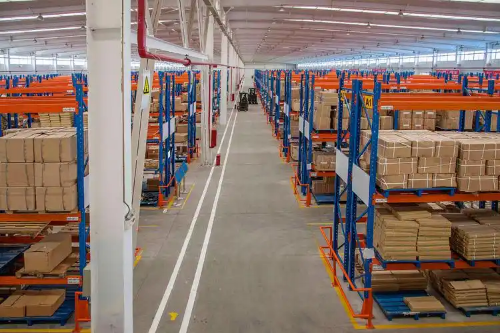
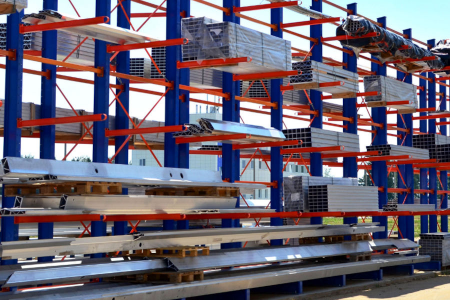
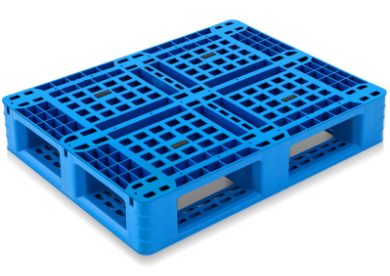
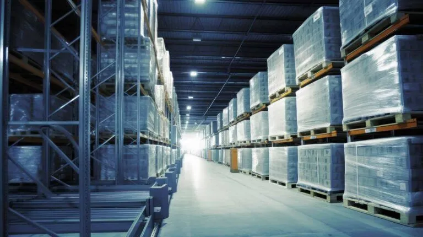
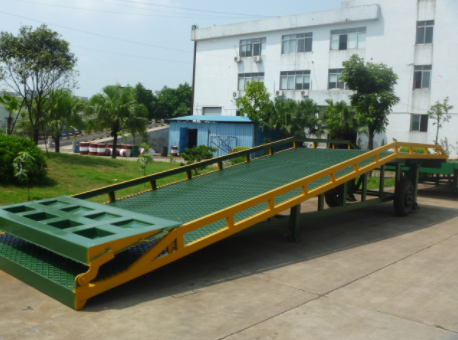






 link:
link:




